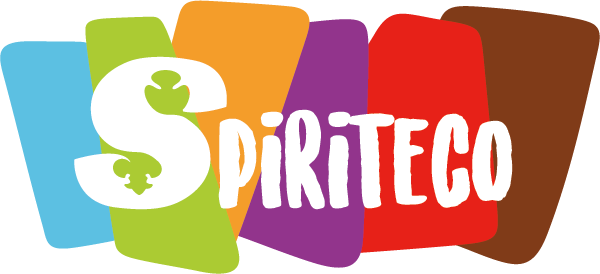Spiritual development objectives:
- Develop one’s value system through experiencing discrimination,
- Get to know oneself better through the analysis of our attitude towards discriminated groups.
- Discover the mechanisms that maintain minorities on a lower level within our society.
- Become aware of the way we contribute to the maintaining of those unfair social structures.
Activity guidelines
Divide the participants into four groups and place them at each corner of the room.
One or several leaders are responsible for taking notes of what is being said or done by the members of each group during the activity.
Announce that the leaders will come through the groups to distribute the material and communicate the instructions.
Go to the first group, give them their material and announce clearly:
“You have one sheet of paper, one magazine, a pair of scissors and some glue. You must make a collage featuring the spring season. You have 20 minutes. Please start whenever you want.”
Then, visit the 2nd and 3rd group giving them the same instructions, except that the 2nd group will need to feature summer, and the 3rd group will feature autumn.
Finally, go to the 4th group, give them their material and announce something that could sound like this:
“Mpso, flosamd loerabtbz losinse bauqvxa poyeks, nseioamans sajiyudo lazerva losifalitome. You have 20 minutes. Please start whenever you want.”
Whilst the groups are working, walk around the room to encourage and support groups 1, 2 and 3 but blame group 4 for not doing what they have been asked to do.
After 20 minutes, stop the activity and ask all groups to give you their collage. Organise a debriefing: you can start by asking the members of the groups to give their opinion about the activity and ask them if everyone has participated.
Then, open a discussion comparing this activity and the reality. Here are a few examples of questions that can be used to start the discussion:
“Can you see any connection between this activity and the reality?”
“In our society, who does the 4th group symbolise?”
“Why do we have a tendency to blame the victims of social injustice?”
“How do people who feel that they are victims of social injustice react? Do they react in the same way as the members of the 4th group?”
The notes taken by the observers can be useful to enrich the debate, remind the participants of this or that attitude, etc
Comments
This activity may provoke strong reactions from the members of the 4th group, frustrated at not being able to understand the instructions and being blamed for it. They will sometimes take it out on the leaders or the other participants. To avoid this, please make sure:
- To make very mixed groups so that nobody feels targeted.
- To make it clear before the evaluation that this is only a game and that all participants should now detach themselves from the activity.
- To allow each participant to express their feelings during the discussion before starting to analyse what has happened.
Variation
If you wish to increase the impact of this activity, you can ask the groups to create a small sketch instead of a collage. This will make it even more stressful for the 4th group which will dread the idea of having to play their sketch in front of a public without having understood the instructions. Be careful once again to make sure that nobody’s feelings are hurt.
Material
4 big sheets of paper, 4 old magazines, 4 pairs of scissors, 4 sets of permanent markers, 4 glue sticks, 1 watch
Source
AnimerSpi - Scouts et Guides Pluralistes de Belgique
BRANDER P. et al., Educational kit All different All equal Education pack: ideas, resources, methods and activities for informal intercultural education with young people and adults, Strasburg : European Youth Centre, 1995 (© Council of Europe)




